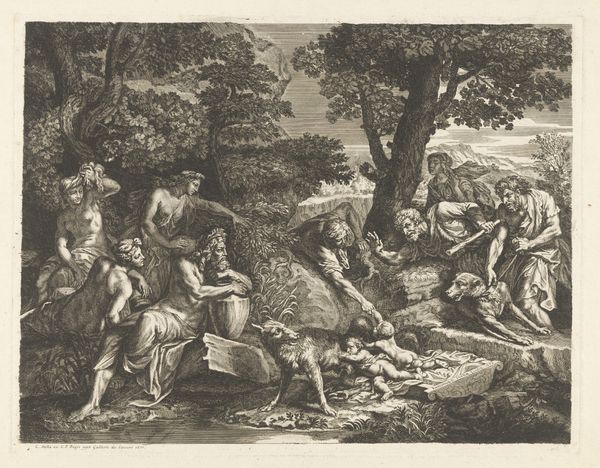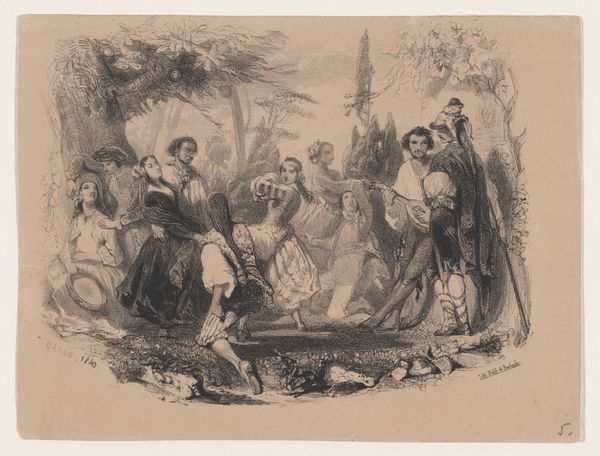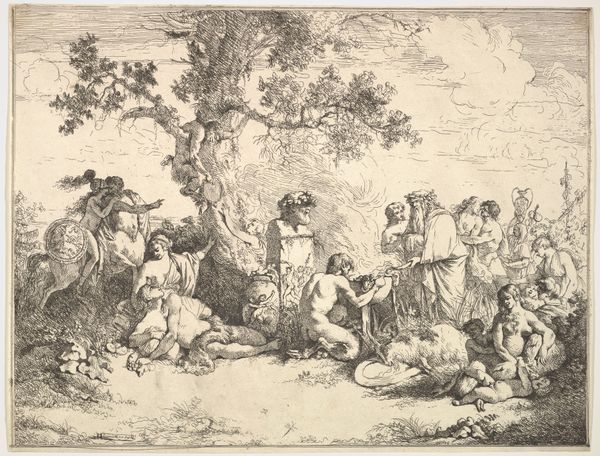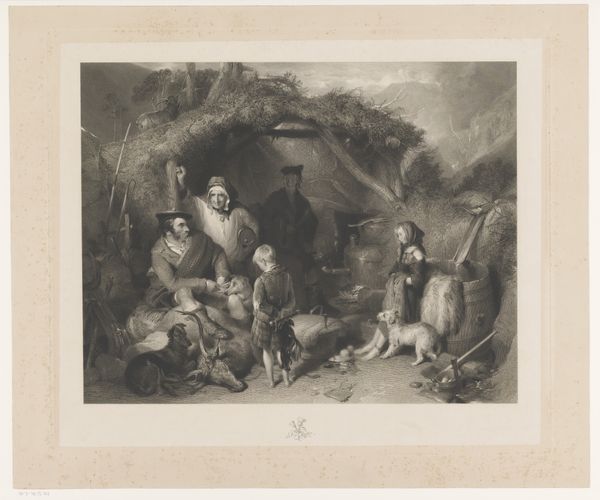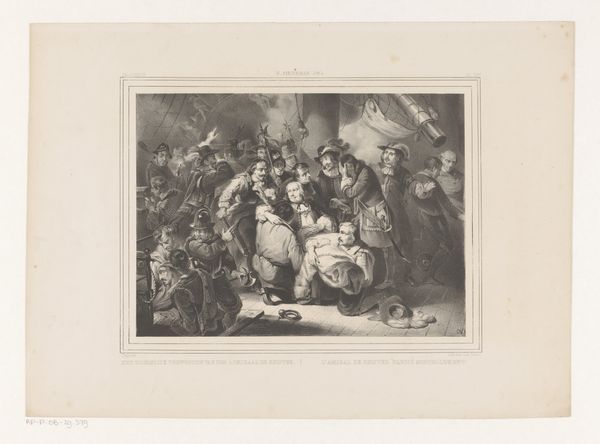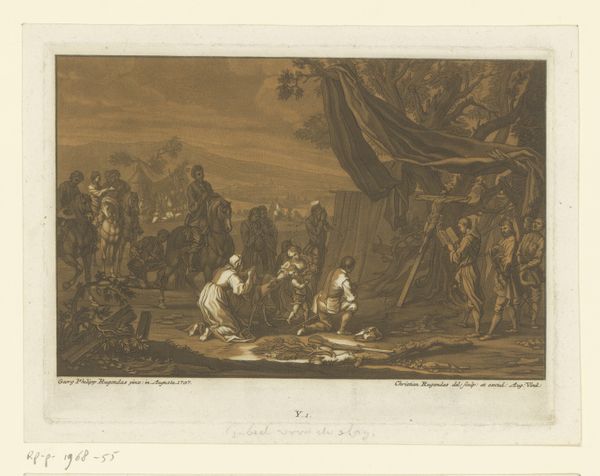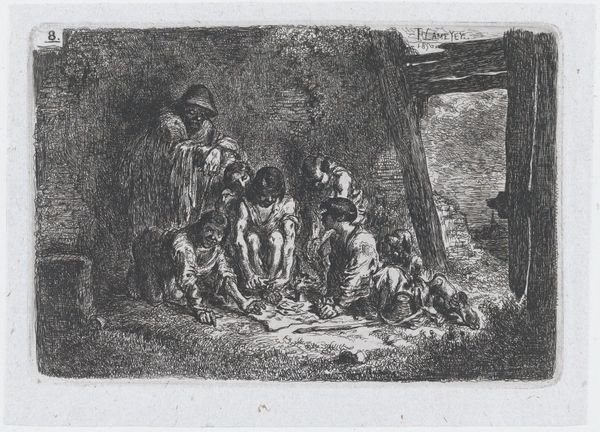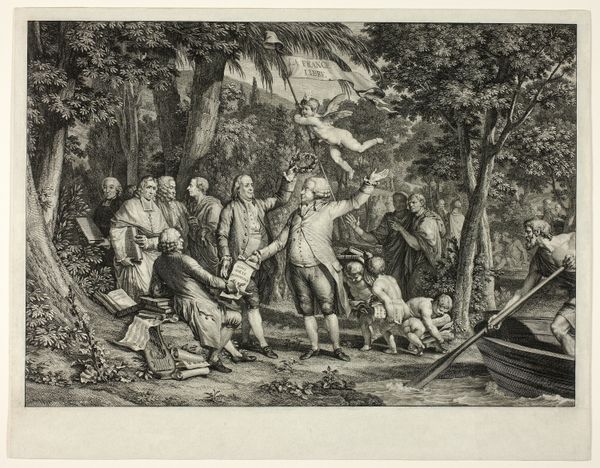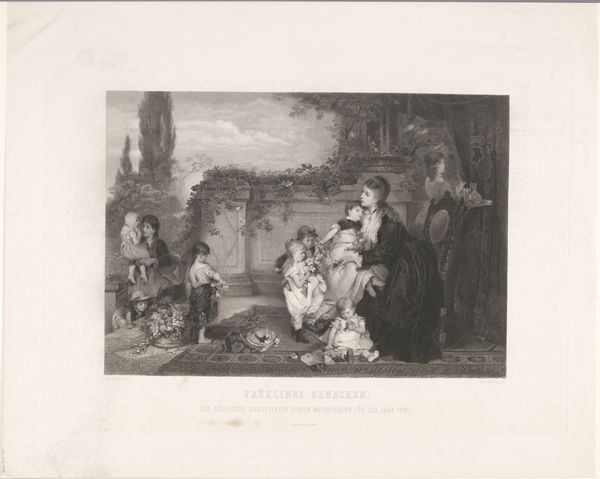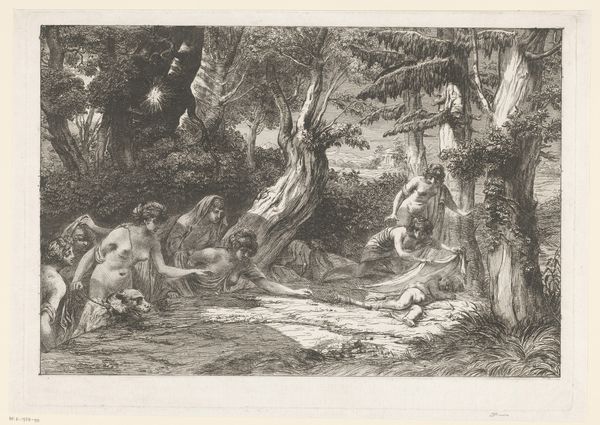
Dimensions: Sheet: 11 3/16 × 17 1/4 in. (28.4 × 43.8 cm)
Copyright: Public Domain
Curator: This print is titled "Intoxication," created by Célestin Nanteuil in 1858. It currently resides in the collection of the Metropolitan Museum of Art. Editor: My immediate impression is one of lavish revelry— a Bacchanalian scene rendered in monochromatic shades that hint at both elegance and abandon. Curator: Indeed. Nanteuil employs intricate etching and lithographic techniques, showcasing a sophisticated layering of textures and tones to construct this scene of allegorical intoxication. The interplay of light and shadow is striking, particularly around the figures. Editor: From a materialist perspective, consider the sheer labor embedded in a lithograph and etching like this. The preparation of the plate, the meticulous drawing, the inking and printing. These were incredibly time-consuming processes, making the reproduction itself a testament to skilled craft. Notice, too, the print itself – the quality of paper would have been quite significant to the overall experience. Curator: The composition guides the eye deliberately, with the central figure reclining atop a wine barrel, suggesting not just literal intoxication, but also the potential disruption of social order. The surrounding cherubs amplify the bacchanal, while the serving maiden suggests both temptation and indulgence. Editor: The act of "service" carries economic weight here, though. Whose labor are we celebrating, exactly? Is this print only speaking to pleasure and allegory, or does the depiction also acknowledge inherent hierarchies? Even the wreath around the central figure’s head is "work", requiring labor and resources, yet transformed into symbolic capital within this very carefully curated world. Curator: I see your point about the socio-economic implications. Still, what captivates me are the visual relationships between figures; the careful articulation of drapery and the use of shadow to model forms. The work exists on its own terms as an aesthetic construction, a harmony of line and form. Editor: For me, that "harmony" is deeply intertwined with its production. Consider the historical conditions: access to materials, labor dynamics, audience expectations. The visual qualities themselves are manifestations of these material realities. Curator: Perhaps we can say that Nanteuil's print reveals layers of meaning, inviting reflection on both aesthetic values and the societal structures in play. Editor: I find myself appreciating both the artist's hand and the socio-historical context within which it worked. Thank you for pointing out the formal brilliance while giving us the possibility to explore how this piece was fabricated within that era.
Comments
No comments
Be the first to comment and join the conversation on the ultimate creative platform.
